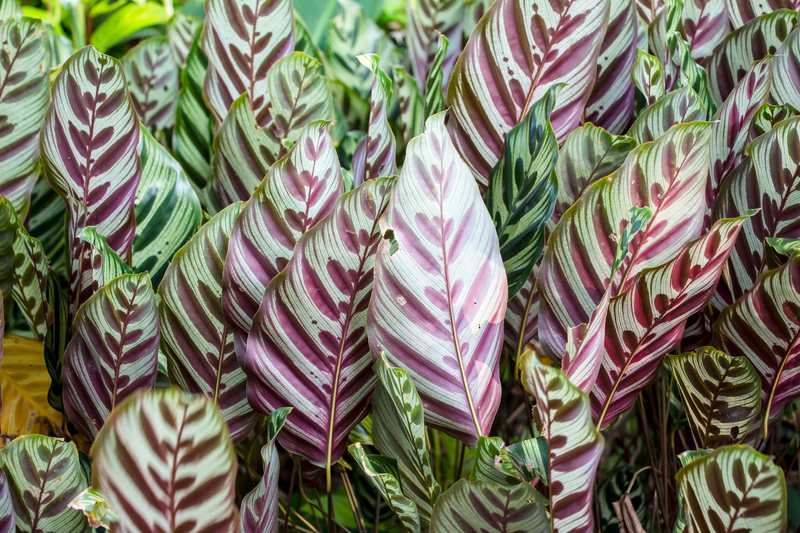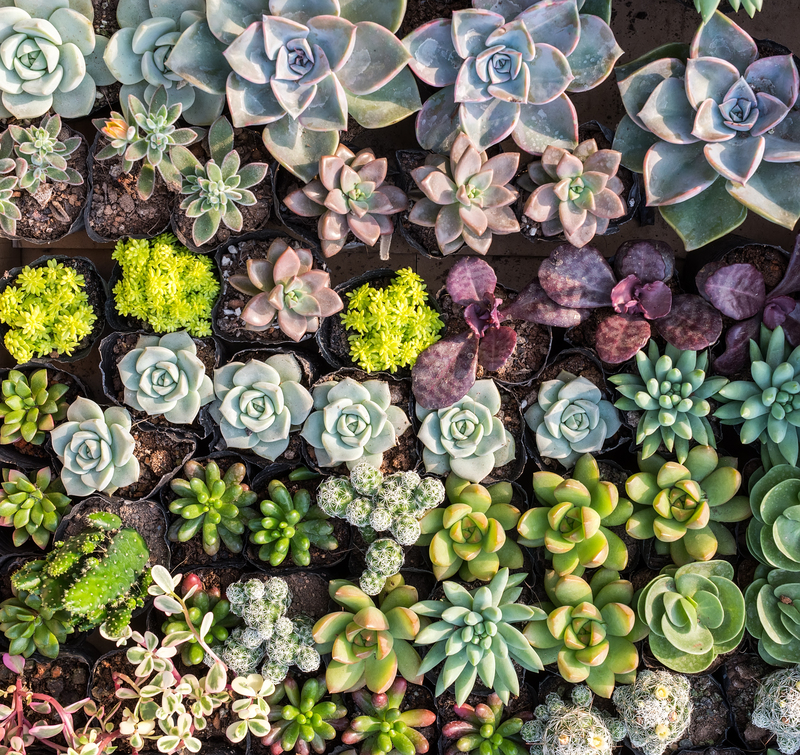Homegrown Flavors: The Art of Herb Gardening
Posted on 26/06/2025
Homegrown Flavors: The Art of Herb Gardening
In a world where fresh, vibrant flavors are sought after in every meal, herb gardening opens the door to a new realm of culinary adventure and well-being. Whether you have a sprawling backyard or a cozy kitchen windowsill, growing your own herbs is not just a hobby--it's a lifestyle that delivers taste, health, and pride straight from your garden to your plate. In this comprehensive guide, we'll explore the colorful world of homegrown herbs, and learn how to master the art of cultivating your own edible oasis.
Why Grow Your Own Herbs?
Freshness You Can Taste: The biggest advantage of having a herb garden at home is the unparalleled freshness. When you snip a handful of basil, mint, or thyme moments before using them, you're enriching your meals with the most intense flavors and aromas possible.
Healthier Gardens, Healthier You: Homegrown herbs empower you to cook with less salt, sugar, and fat while packing your dishes with robust flavor and nutrition. Many common herbs have antioxidant-rich profiles and unique health benefits.
Cost-Effective and Eco-Friendly: Pre-packaged supermarket herbs can be expensive and often wilt before you finish the bunch. Growing your own helps reduce waste and saves money over time.
- Reduce Plastic Waste: No more single-use wrappers or clam-shells.
- Lower Carbon Footprint: Herbs don't have to travel thousands of miles to reach your plate.
Unlocking the tastes of global cuisines is easier when the world's flavors are right at your fingertips. Herb gardening at home also fosters mindfulness, creativity, and a deeper connection to nature.

Choosing the Right Herbs for Your Garden
One of the joys of herb cultivation is tailoring your garden to your own palate. Before planting, consider these key factors:
- Climate: Mediterranean herbs like rosemary, oregano, and thyme thrive in dry, sunny climates, while cilantro and mint handle cooler, moister environments.
- Space: Some herbs, like basil and parsley, grow compactly and do well indoors or in containers. Others, like sage and fennel, need more room to flourish.
- Culinary Preferences: What flavors do you use most in your kitchen? Start with those favorites and expand as you grow more confident.
Top 10 Essential Herbs for Every Home Garden
- Basil: The quintessential summer herb, beloved in Italian and Asian cuisine.
- Parsley: Universally versatile, brightens dishes and doubles as a garnish.
- Mint: Adds refreshing notes to drinks, desserts, and salads.
- Rosemary: Aromatic and hardy, perfect for roasting and grilling.
- Thyme: Earthy, subtle, and essential for soups and stews.
- Oregano: A Mediterranean must-have for pizzas, pasta, and vegetables.
- Coriander/Cilantro: An Asian and Latin American staple with unique bright flavor.
- Chives: Mild onion flavor, great for eggs, potatoes, and dips.
- Sage: Robust and savory, elevates poultry and stuffing.
- Dill: Delicate, perfect for fish and pickles.
Most herbs are easy to grow for beginners, so don't hesitate to experiment with new varieties each season!
Planning Your Herb Garden: Indoors and Outdoors
Outdoor Herb Gardens
Outdoor gardens offer space for herbs to grow lush and vibrant. Follow these basics:
- Sunlight: Most herbs need at least 6 hours of sun per day. Choose an open space free from shade.
- Soil: Well-draining, loamy soil is ideal. Amend heavy clay soils with organic compost.
- Spacing: Follow seed packet instructions--a crowded herb garden leads to poor airflow and disease.
- Watering: Herbs prefer moist but not soggy soil. Use mulch to retain moisture and reduce weeds.
Container and Indoor Herb Gardening
Even if you lack yard space, herb gardening indoors is delightfully achievable:
- Containers: Use pots with drainage holes; smaller herbs do well in compact pots, while larger varieties (like rosemary or sage) need 10" or larger containers.
- Light: Place pots near a south or east-facing window. If natural light is limited, supplement with grow lights.
- Watering: Indoor air can dry soil quickly; check daily and water when the top inch of soil feels dry.
- Feeding: Use a balanced liquid fertilizer every month during the growing season.
Tip: Rotate your containers regularly to ensure even sun exposure and prevent stems from leaning.
The Fundamentals of Herb Care
Watering and Feeding
- Basil, Parsley, Mint: Prefer consistently moist (not waterlogged) soil. Water deeply when the top inch is dry.
- Rosemary, Oregano, Thyme, Sage: Thrive in well-drained soil--avoid overwatering.
Organic compost or slow-release fertilizers provide vital nutrients without chemical buildup.
Pruning and Harvesting
- Regular Pruning: Pinch or snip back stem tips regularly to encourage bushier growth.
- Early Harvest: Begin harvesting once plants are 6-8 inches tall--pick leaves frequently but avoid stripping entire branches.
- Flower Control: Remove flower buds to keep herbs producing tender leaves; once most herbs flower, leaf production slows.
Tip: Use clean, sharp scissors or your fingers to harvest. Herbs respond better to gentle, consistent picking.
Preserving and Storing Homegrown Herbs
To enjoy the flavors of your herb garden year-round, try these preservation methods:
- Drying: Bundle stems and hang upside down in a cool, dry area out of direct sunlight. Store in airtight jars for months.
- Freezing: Chop herbs, add a bit of water or oil, and freeze in ice cube trays. Perfect for soups, sauces, and stews.
- Infusing: Steep herbs in oils or vinegars for flavorful dressings or marinades.
- Herb Butters: Mix minced herbs into softened butter, roll into a log, wrap, and freeze.
Remember: Always wash and thoroughly dry herbs before storage to prevent mold and spoilage.
Creative Ways to Use Your Garden Herbs
Herbs are potent flavor-makers--but their uses go far beyond the kitchen:
1. Culinary Delights
- Pesto and Sauces: Basil, parsley, cilantro, and dill create fresh, vibrant pestos and dressings.
- Herb Salts: Blend chopped herbs with coarse salt for custom seasoning blends.
- Infused Oils and Butters: Add savor to breads, roasted veggies, and proteins.
2. Wellness and Homecare
- Herbal Teas: Mint, lemon balm, and chamomile infusions calm and soothe or invigorate.
- Natural Cleaners: Fresh rosemary, thyme, and lavender infuse homemade cleaning sprays with anti-bacterial properties and pleasant scents.
3. Decorative Touches
- Herb Bouquets: Display fresh-cut bundles in vases for a rustic, aromatic centerpiece.
- Dried Arrangements: Sage, rosemary, and lavender make beautiful dried wreaths, sachets, or decor.
Common Challenges in Herb Gardening (and How to Overcome Them)
Even seasoned gardeners encounter plant problems. Here's how to keep your herbs healthy:
- Pests: Aphids, whiteflies, and spider mites are common. Rinse plants with water or use insecticidal soap--always avoid harsh chemicals on edible plants.
- Disease: Fungal diseases often arise from overwatering or poor airflow. Space plants, remove diseased leaves, and water early in the day.
- Legginess: Herbs grown in low light stretch and become leggy. Increase sunlight or use grow lights.
- Poor Growth: Ensure soil is fertile, not compacted, and that containers aren't rootbound.
Patience is key; herbs are forgiving and often bounce back with a little care and attention!
Seasonal Tips for Year-Round Flavor
Spring
- Start seeds indoors for basil, parsley, dill, and cilantro in early spring for an earlier harvest.
- Plant hardy perennials (chives, thyme, mint, sage) as soon as the ground can be worked.
Summer
- Harvest early and often--this is peak season for most annuals.
- Watch for bolting (premature flowering) in cilantro and basil; harvest quickly if plants start to flower.
Fall
- Bring sensitive herbs indoors as temperatures drop.
- Dry or freeze surplus for winter use.
Winter
- Grow herbs under lights indoors for fresh flavor all winter.
- Plan next year's plantings, order seeds, and refresh containers.
With a bit of forethought, your herb harvests can span every season, keeping your home stocked with delicious possibilities!
The Joy of Experimentation: Unusual and Exotic Herbs
Once you've mastered classic herb gardening, branch out with exciting varieties. Try:
- Lemon Verbena: Sweetly citrusy, perfect for teas and desserts.
- Thai Basil: Spicy, anise-tinged leaves for Southeast Asian dishes.
- Shiso: A Japanese favorite with unique flavor for sushi and salads.
- Lovage: Intense celery flavor, great for stocks and broths.
- Summer Savory: Peppery and robust, complements beans and meats.
Specialty seed catalogs and local nurseries are treasure troves for discovering new edible herbs.

Kids and Herb Gardening: Nurturing a Green Thumb Early
Herb gardening is a wonderful way to introduce children to nature, science, and healthy eating. Engage young gardeners by:
- Letting them plant easy, fast-growing herbs like basil or cress in fun containers.
- Encouraging taste tests--herbs are infinitely safer and more rewarding than many houseplants!
- Making simple projects: pizza gardens, herbal "tea parties," or pressed-flower art with dried leaves.
Kids who take part in herb gardening at home are more likely to enjoy vegetables and adventurous flavors. Plus, they'll learn responsibility, observation, and patience along the way.
The Sustainable Kitchen: Growing Your Culinary Independence
By mastering the art of herb gardening, you're not just cultivating flavor--you're joining a tradition that spans centuries and cultures. From container-grown basil on a sunny windowsill to perennial sage thriving in backyard beds, every sprig you harvest brings you closer to culinary self-sufficiency and a more sustainable, eco-conscious kitchen.
Ready to get started? Whether you're a first-time gardener or a seasoned green thumb, there is always new flavor to explore when you grow your own homegrown herbs. Begin small, observe nature's rhythms, and let each success inspire future experiments. Soon, your household will delight in the distinct, delicious homegrown flavors that only fresh herbs can provide!



